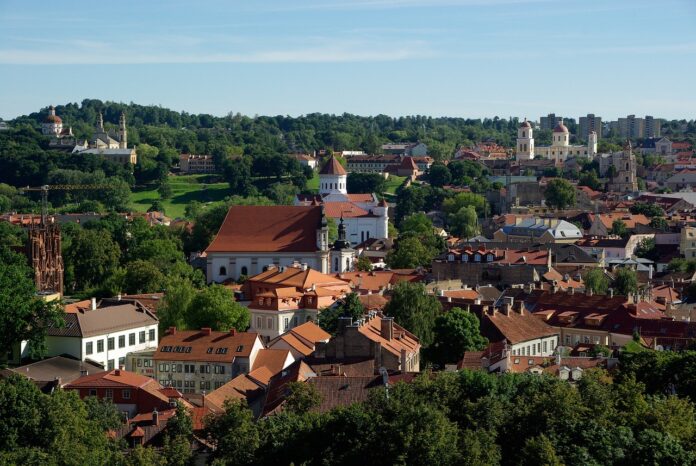21 Interesting Facts about Lithuania
- Location and Borders: Lithuania is located in the Baltic region of Europe. It is bordered by Latvia to the north, Belarus to the east and south, Poland to the southwest, and Kaliningrad Oblast (a Russian exclave) to the west. It also has a coastline along the Baltic Sea to the northwest.
- Square: The country covers an area of approximately 65,300 square kilometers.
- National Currency: The currency of Lithuania is the Euro (EUR).
- Official Language: The official language of Lithuania is Lithuanian.
Interesting Facts about Lithuania:
- Geographical Center of Europe: According to French scientists, the geographical center of Europe is located in Lithuania, near the village of Purnuškės, about 25 km north of Vilnius.
- Numerous Lakes: Lithuania has more than 3,000 lakes, formed by glaciers 10,000–12,000 years ago.
- National Sport: Basketball is the national sport of Lithuania, having been popular since the 1930s and maintaining its status to this day.
- Ancient Language: Lithuanian is one of the oldest languages in the world and one of the oldest surviving Indo-European languages in Europe.
- Unique Doors in Vilnius: In Vilnius, there are doors that only women can pass through, intended for the nuns of the monastery of the Poor Clares.
- First Capital: Kernavė was the first capital of Lithuania and is now a small village with about 300 residents. The current capital is Vilnius.
- Small Cities: Lithuania has 106 cities, none of which are home to over a million residents.
- Ancient Oak Tree: The Stelmužė Oak is one of the oldest oak trees in Europe, with a history of over 2,000 years.
- Home Ownership: Over 90% of Lithuanians own property, as it is considered the best investment.
- Old University: Vilnius University, founded in 1579, is one of the oldest universities in Europe and the oldest in the former Soviet Union.
- Historical River: The Nemunas River served as a frontline during Lithuania’s resistance to the Crusades. Medieval fortifications and castles can still be found along its right bank.
- Green River: Each year, the Vilnia River is dyed bright emerald green in honor of St. Patrick’s Day, inspired by a tradition that began in Chicago in the 1960s.
- Historical Expansion: In the early 17th century, Lithuania’s territory spanned 990,000 square kilometers, but it has since shrunk by 15 times.
- Award-Winning Beer: Lithuanian beer Švyturys has won top awards at the World Beer Championships for several years in a row.
- Population Decline: Due to emigration and natural mortality, Lithuania’s population is rapidly decreasing. There are 15% fewer men than women in the country.
- Independence Recognition: On February 4, 1991, Iceland became the first country to officially recognize Lithuania’s independence.
- Late Christianity: Lithuanians were among the last in Europe to adopt Christianity, yet Vilnius is home to numerous churches and cathedrals.
- No Trams or Metro: Vilnius has no trams or metro. Intense debates over which transport system to build in the capital have been ongoing for the past decade, but no decision has been reached.
- Land of Storks: Lithuania is often called the land of storks, with around 31,000 pairs residing there. The stork is a national symbol.
- International Memberships: Lithuania is a member of NATO, the Council of Europe, and the European Union.
- Baltic Sea Tunnel: The only railway tunnel under the Baltic Sea is located in Kaunas, built in 1860, with a total length of about 1 km.
